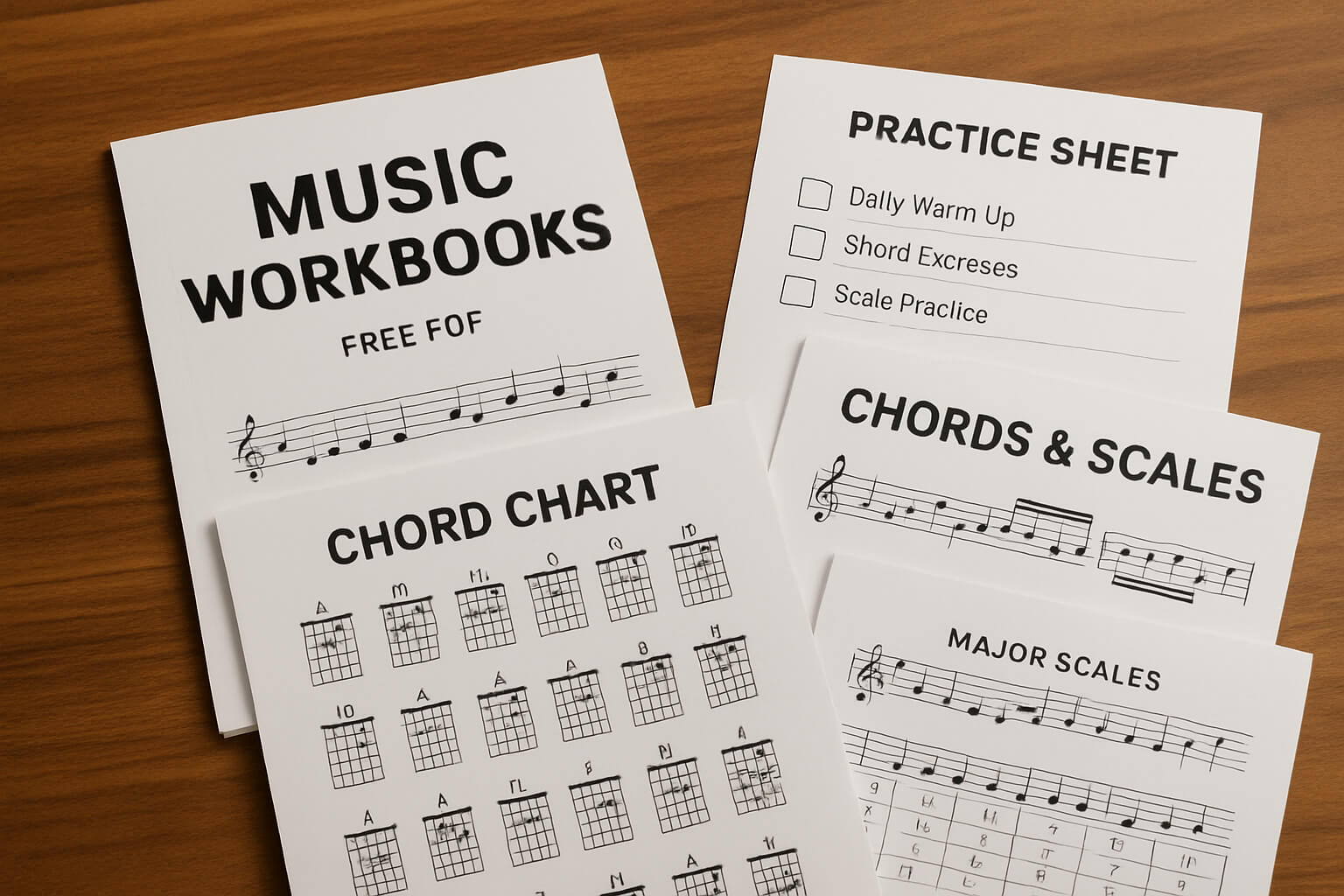August 06, 2025

Learning music no longer requires expensive textbooks or subscriptions. Today, you can access an abundance of high-quality, free PDF workbooks that cover everything from instrument technique and music theory to production and ear training. These resources are ideal for self-taught learners, students, educators, and hobbyists alike.
Below is a curated list of the most useful free PDF resources, along with what each offers and how it fits into a broader learning strategy.
This comprehensive eBook introduces fundamental chord shapes such as open major and minor chords, along with basic strumming patterns to get your rhythm hand moving. It also includes play-along exercises and entry-level songs, making it ideal for those picking up the guitar for the first time.
You’ll learn:
Best For:
More on this topic: Exploring Different Guitar Styles: From Classical to Metal
Designed as a week-long crash course, this workbook offers a day-by-day plan to learn basic hand positions, simple melodies, and foundational chords. Each day focuses on building skills such as finger independence, note recognition, and hand coordination, which are crucial for long-term piano progress.
You’ll learn:
Best For:
Recommended companion: Unlocking the Piano Fretboard: Major and Minor Scales Explained
Available on the Music Blog
These compact PDFs act as quick-reference guides for commonly used theory concepts such as scales, intervals, triads, seventh chords, and key signatures. Whether you’re composing, analyzing songs, or preparing for music exams, these sheets simplify the theory process.
You’ll access:
Best For:
Expand your understanding:
This workbook provides progressive listening drills to help you identify intervals, recognize chord qualities, and transcribe melodies by ear. Ear training is a critical skill for playing by ear, improvising, and performing in ensembles.
You’ll practice:
Best For:
Related exercises: How to Develop Perfect Pitch
Available via free rhythm websites.
These printable sheets include clapping exercises, subdivision drills, and time signature variations designed to improve your internal sense of timing. The workbook emphasizes counting and precision, essential for both solo and group musicianship.
You’ll develop:
Best For:
More rhythm tools: Why Understanding Rhythm Is Crucial for Every Musician
Search “Free Music Staff Paper PDF”.
Use blank staff paper to write your own exercises, compose music, or practice transcribing what you hear. Developing your notation skills enhances your understanding of theory, harmony, and arrangement.
These sheets are ideal for:
Best For:
Must-read: The Ultimate Guide to Music Reading for Beginners
This guide walks producers through how to download, organize, and use royalty-free sample packs inside a DAW (Digital Audio Workstation). It also includes links to curated free downloads and tips on licensing.
You’ll explore:
Best For:
Also check out:
To get the most out of these PDFs:
Remember: consistency beats intensity.
Stay up to date with the latest tips, expert insights, product reviews, and step-by-step guides to help you grow, create, and succeed—no matter your industry or passion.